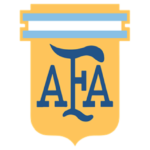


Rivaling Milan’s La Scala and New York’s Metropolitan Opera House, el Teatro Colón is one of the best-known opera houses in the world for its acoustic clarity and architectural sophistication. But like many of Buenos Aires’s other iconic structures, the Teatro Colón was built upon the historical foundations of Buenos Aires, just as the city was first gaining ground as a major world metropolis.
The Teatro Colón has stood on its current location along Plaza Lavalle since 1908. But in fact, this is the second home of the theatre. The original Teatro Colón first opened in 1857 on Plaza de Mayo, directly facing the Casa Rosada, where today stands the Banco de la Nación Argentina.
The first Teatro Colón was designed by Carlos Pellegrini, a French-born portrait painter and the father of the future president of Argentina. The original theatre was destroyed in 1888, and two years later, under the auspices of the designer’s son, president Carlos Peligrini, was replaced with the newly founded Argentine National Bank. Despite the implied familial strife, The decision to demolish the original Teatro Colón was one based on city planning. You see, by 1880 the area surrounding Plaza de Mayo had become a major center of commerce and finance. And, was no longer deemed an appropriate home for one of the city’s most notable cultural centers.
Today’s Teatro Colón was designed by three of Buenos Aires’s most notable architects at the turn of the twentieth century. The initial commission was granted to the studio of Italian-born architect, Francesco Tamburini. Having studied architecture at the Royal Academy of Naples, it is no wonder that Tamburini designed a horse-shoe shaped theatre, a form made famous by the Teatro di San Carlo in Naples. Unfortunately, Tamburini died before the completion of the Teatro Colón, in 1891.
After Tamburini’s death, his apprentice Vittorio Meano took over the project. Also an Italian immigrant, Meano rose to prominence upon the death of his former mentor. Between the years 1901 and 1903, Meano continued work on the Teatro Colón and additionally won a competition for the design of the National Congress building. Tragically, Meano never got to see the completed Teatro Colón nor the Congress, as he was murdered in 1904.
After Meano’s death a third architect, Julio Dormal, oversaw the completion of the Teatro Colón and the Congress. Dormal, a Belgian, was trained at the famous École des Beaux-arts in Paris, and is responsible for much of the importation of Beaux-arts classicism to Buenos Aires. A loyal student, Dormal remained true to Meano’s designs for Congress and Tamburini’s for the Teatro Colón, and was the architect present at the theatre’s official re-opening in 1908.
The theater no longer follows a specific dress code but the majority of people still dress up out of sheer respect for the theater and its impressive history. The level to which you are expected to dress up often depends on the seating. Those who have purchased a more expensive seat tend to dress up a bit more than those who have a standing ticket. Unless the theater is hosting a gala, there is no need to dress black tie. You will generally be dress appropriately anywhere between business casual and formal wear.
Seeing a show in one of the most important opera houses of the world is a truly unique experience that will compliment your trip to Argentina. You can buy tickets at the Box Office at Tucumán 1171 from Monday to Saturday from 9 am to 8 pm, or get your tickets online.
(US) 910 795 2992
(AR) +54 9 11 —- —-
©Copyright 2025 Landingpadba, LLC